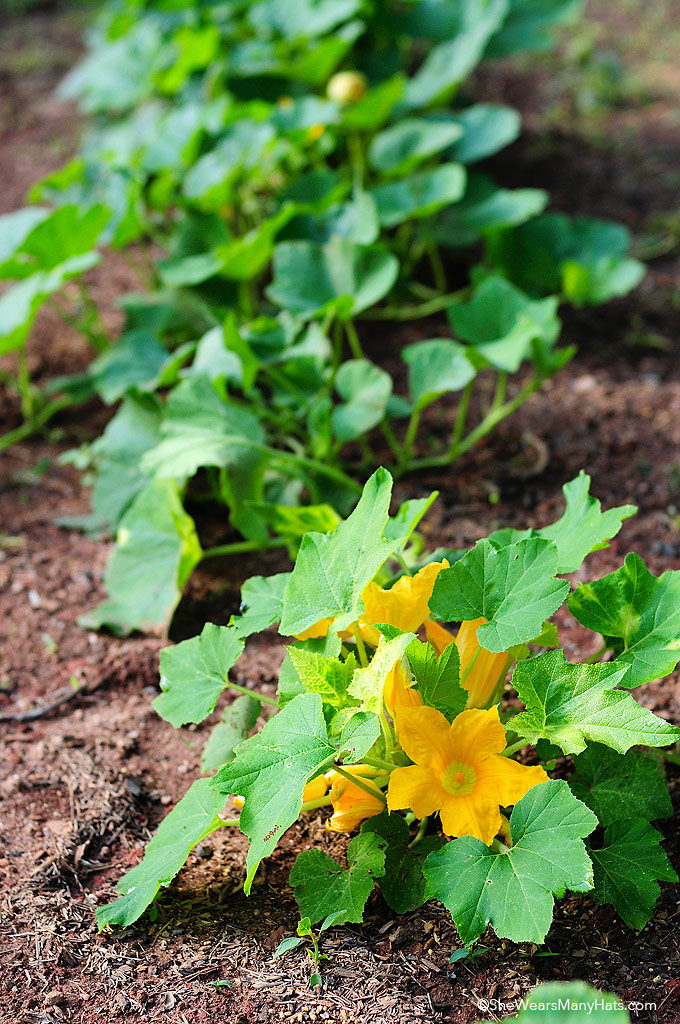Help Prevent Hungry Pests
This post may contain Amazon or other affiliate links. As an Amazon Associate I earn from qualifying purchases.
Recently I was contacted by the USDA-APHIS (United States Department of Agriculture – Animal and Plant Health Inspection Service), about helping to spread the word about the Hungry Pests program. Have you heard about Hungry Pests? Hungry Pests is an awareness program that educates the public about 19 invasive pests that wreak havoc on our environment, damaging crops, trees, and plants across the United States. These pests can not only cause harm to gardens and landscapes, but cost our nation billions of dollars in damages each year, resulting in lost trees and crops, jobs and ecosystems, and even displacing native and beneficial insect species.
If you maintain a home landscape or garden, you may have encountered problems with pests. As a gardener, I’ve personally experienced the frustration of dealing with invasive pests over the years. Invasive pests can cause problems in very little time, costing not only money, but our precious time trying to safely get rid of them. I can only imagine what impact they have on large farms and forests.
Thankfully, there are steps that we can take, even as a home gardener, to help keep these Hungry Pests from spreading and help in the battle against the growing problem they have created. Check out these simple tips that the USDA-APHIS recommends to help protect gardens and landscapes for these Hungry Pests:
- Only buy plants from reputable sources. When purchasing plants for your garden or landscape, seek out established nurseries or respected online businesses. Find out where they buy their plants and if they comply with federal quarantine restrictions. Be aware of fly-by-night dealers, local and online, that may not meet requirements to help keep plants free of invasive pests.
- Safely dispose of trees, branches or other yard debris. Call your local USDA office for recommendations. If you are in a quarantined area, invasive pests can easily be spread by moving debris outside of your property. Make sure any contractors you are working with also follow these procedures. For a list of local USDA offices, visit https://www.aphis.usda.gov/planthealth/sphd.
- Don’t transplant, transport or move in any way citrus plants or items made with fresh citrus. This includes floral arrangements, or kaffir lime leaves used in cooking. Citrus greening, a citrus disease that is damaging America’s orange groves, has spread from citrus plants and products improperly moved and transported.
- Check to see if you live in an area under quarantine for an invasive pest. Call your local USDA office to find out before moving homegrown produce, plants and plant parts. And to be safe, don’t bring back plants from other areas, including when traveling abroad. That’s how the Mexican fruit fly – which threatens at least 50 types of fruits and vegetables – entered the United States.
- Look for round and D-shaped holes in trees, especially in the late spring and summer months. They could be the exit holes of Asian longhorned beetles or emerald ash borers. Also look for yellow, thin or wilted leaves, shoots growing from roots or tree trunks, sawdust-like material on the ground or in branches, and unusual woodpecker activity. If you see something that looks suspicious, be safe and report it using the “Report a Pest” button found on the home page of the Hungry Pests’ website.
- For those living in the northeast quadrant of the country, inspect lawn furniture, fences, walls and other outdoor items, and remove and immerse gypsy moth egg masses in soapy water. This is especially important before moving outdoor items to areas outside your property. Gypsy moths eat more than 300 species of trees and shrubs, including fruit trees. Early detection is key to controlling them, so report findings to federal or state agricultural officials.
Feel free to share this infographic or print it out for a helpful reminder:
In addition to these simple steps, visit www.HungryPests.com to see photos of the 19 Hungry Pests. You’ll also find more helpful information about protecting your property and preventing these invasive pests from spreading and doing more damage to the crops and trees that are vital to the health of our environment. The website not only includes photos, but descriptions of each pest, which ones threaten each state, an online tracker of federal quarantines, and phone numbers to report signs of these invasive pests.
This is a sponsored conversation written by me on behalf of the United States Department of Agriculture – Animal and Plant Health Inspection Service. The opinions and text are all mine.





Thanks for the information, Amy!
I love this post! Thanks for sharing this well laid out information and the infographic. This is important, must know info and resources, especially home landscapers/gardeners!
Good post – this is all new to me – thanks for sharing the info
Thanks so much, Amy!
I’m searching for information about “Hungry Pests”. and found your post. Got some great tips from you, Amy. Thanks
So happy you found it helpful, Vicky!
The most important step to prevent your home and garden from pests is to be aware of the pests that might be a threat in your area. Then be sure to cooperate with any regulations or quarantines that might be in effect. Finally, take care to be sure that you’re never packing a pest.
How interesting! I have not heard of hungry pests but I have had some thing eating up all my basil leaves in my garden. Thanks for the tips on how to prevent the spread of those invasive bug species.